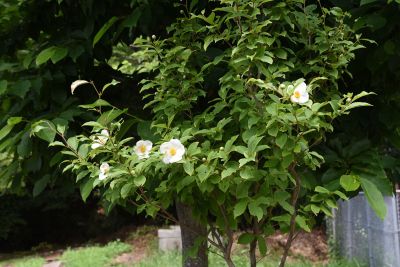For more Japanese stewartia info and tips on Japanese stewartia care, read on.
What is a Japanese Stewartia?
Native to Japan, the Japanese stewartia tree (Stewartia pseudocamellia) is a popular ornamental tree in this country. It thrives in U.S. Department of Agriculture plant hardiness zones 5 through 8. This lovely tree has a dense crown of oval leaves. It grows to about 40 feet (12 m.) tall, shooting up at the rate of 24 inches (61 cm.) a year.
Japanese Stewartia Information
It’s hard to know where to begin to describe the ornamental aspects of this tree. The dense canopy and its conical or pyramid shape are pleasing. And branching begins close to the ground like crape myrtle, making this an excellent patio or entryway tree. Stewartias are beloved for their summer blossoms that resemble camellias. The buds appear in spring and flowers keep coming for two months. Each one alone is short-lived, but they replace each other rapidly. As autumn approaches, the green leaves blaze in reds, yellows, and purples before falling, to reveal the spectacular peeling bark.
Japanese Stewartia Care
Grow a Japanese stewartia tree in acidic soil, with a pH of 4.5 to 6.5. Work in organic compost before planting so that the soil retains moisture. While this is optimal, these trees also grow in clay soil of poor quality. In warm climates, Japanese stewartia trees do better with some afternoon shade, but it likes full sun in cooler regions. Japanese stewartia care should include regular irrigation to keep the tree as healthy and happy as possible, but these trees are drought tolerant and will survive for some time without much water. Japanese stewartia trees can live for a long time with proper care, up to 150 years. They are generally healthy with no particular susceptibility to disease or pests.
